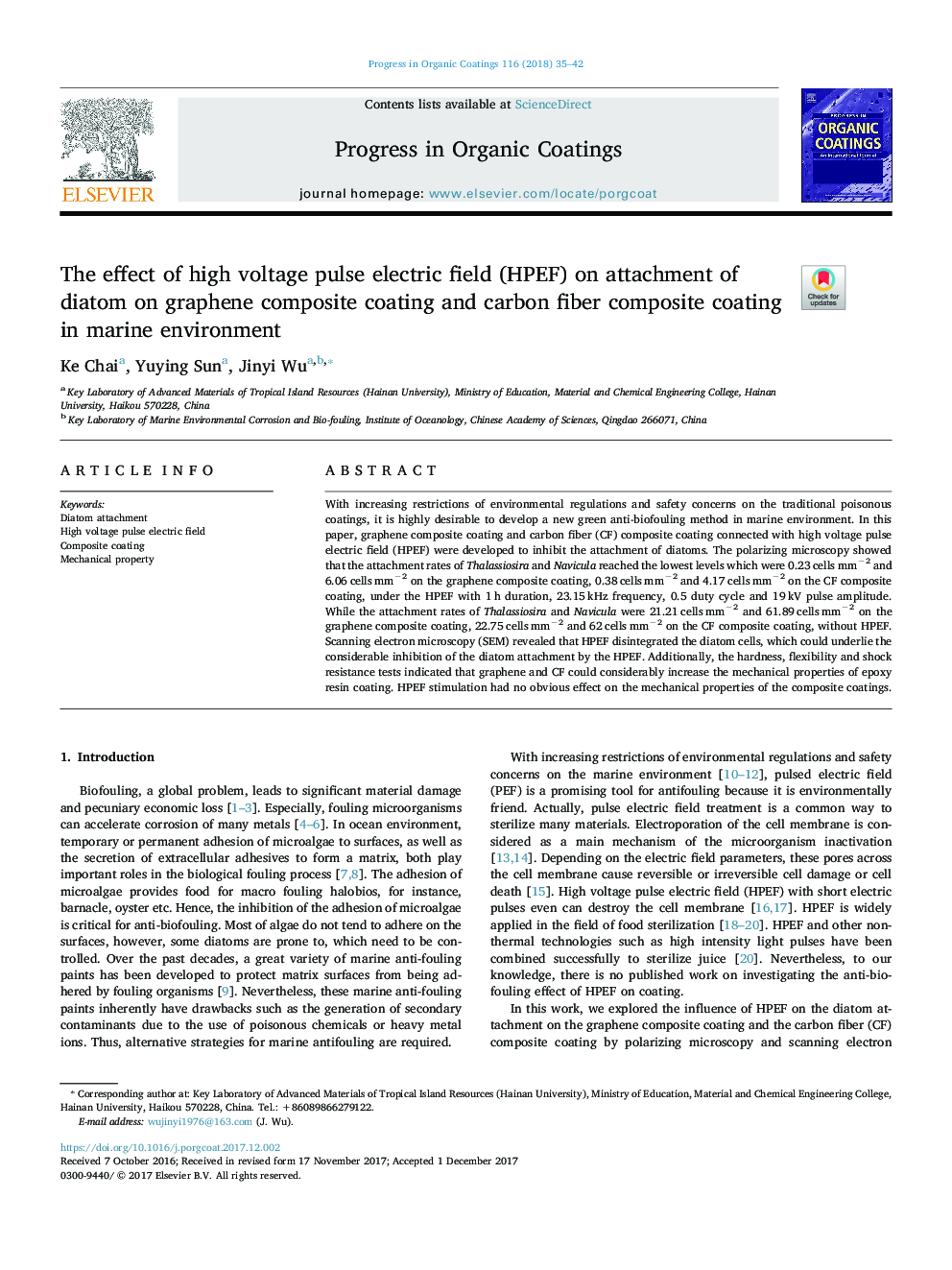| Article ID | Journal | Published Year | Pages | File Type |
|---|---|---|---|---|
| 7106124 | Progress in Organic Coatings | 2018 | 8 Pages |
Abstract
With increasing restrictions of environmental regulations and safety concerns on the traditional poisonous coatings, it is highly desirable to develop a new green anti-biofouling method in marine environment. In this paper, graphene composite coating and carbon fiber (CF) composite coating connected with high voltage pulse electric field (HPEF) were developed to inhibit the attachment of diatoms. The polarizing microscopy showed that the attachment rates of Thalassiosira and Navicula reached the lowest levels which were 0.23â¯cellsâ¯mmâ2 and 6.06â¯cellsâ¯mmâ2 on the graphene composite coating, 0.38â¯cellsâ¯mmâ2 and 4.17â¯cellsâ¯mmâ2 on the CF composite coating, under the HPEF with 1â¯h duration, 23.15â¯kHz frequency, 0.5 duty cycle and 19â¯kV pulse amplitude. While the attachment rates of Thalassiosira and Navicula were 21.21â¯cellsâ¯mmâ2 and 61.89â¯cellsâ¯mmâ2 on the graphene composite coating, 22.75â¯cellsâ¯mmâ2 and 62â¯cellsâ¯mmâ2 on the CF composite coating, without HPEF. Scanning electron microscopy (SEM) revealed that HPEF disintegrated the diatom cells, which could underlie the considerable inhibition of the diatom attachment by the HPEF. Additionally, the hardness, flexibility and shock resistance tests indicated that graphene and CF could considerably increase the mechanical properties of epoxy resin coating. HPEF stimulation had no obvious effect on the mechanical properties of the composite coatings.
Keywords
Related Topics
Physical Sciences and Engineering
Chemical Engineering
Process Chemistry and Technology
Authors
Ke Chai, Yuying Sun, Jinyi Wu,
